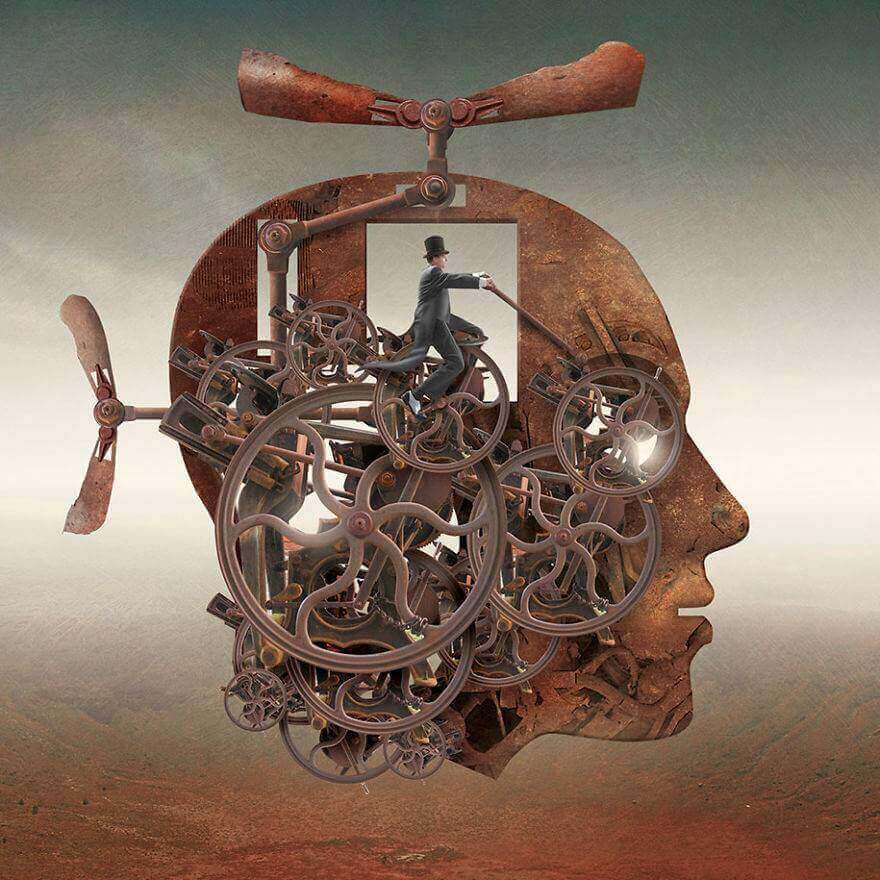Our brains are amazing. It has been studied for many years and we have not yet discovered all its possibilities, it is like the universe: infinite and full of surprises. Perhaps that’s why, when new functions or areas of the brain are identified, we try to simplify discovery, it happened with Penfield’s homunculus.
Penfield’s homuncle was first described by Dr. Wilder Penfield between the 1940s and 1950s, this Canadian neurosurgeon sought to explain and cure neurological diseases such as epilepsy, during his work, as the brain does not feel pain, applied electric shocks in different areas and asked his patients, who were awake, how they felt.
- By applying these shocks.
- He discovered a small area of the brain that had a sensory map of our body.
- This sensory map reflected the sensitivity of each part of our body.
- Decided to represent this area as if it were a human form.
- Giving birth to penfield’s homuncle.
What makes this representation special is to be aware that we have areas of our body more sensitive to stimulation than others, this representation gave birth to a deformed and disproportionate man, where the most sensitive areas are larger than the less sensitive ones. not all, soon after, we discovered that not only was it a man who lived in our head, but two, a sensory and an engine, both very different, but with common points.
“As long as the brain is a mystery, the universe will remain a mystery. “Santiago Ramon and Cajal?
According to current studies, there are two Penfield Homunculi: one sensory and one motor, we will know them more deeply.
The motor homoncula or primary motor cortex is located next to the sensory homoncula, exactly in the central groove of the frontal cortex, an area that is the most important for the motor function of our body.
In collaboration with other domains, such as the additional motor cortex and taking into account the references received from the thalamus, it develops and executes the motor movements of our body, so its appearance is slightly different from that of the sensory homonculum: its mouth, eyes and especially its hands are huge due to the greater specificity in the location of receptors and motor nerves.
A curiosity of this field is that it develops differently in each human being, this implies that the speed of its development is unique and personal, this depends on which parts of the body are used, which are the most motor or more trained.
The sensory homunculum represents the primary somatic cortex, or tactile sensitivity, to pressure or pain in our body. It is located in the parietal lobe, right at its junction with the frontal lobe. Explained in another way, the sensory homunculum includes Broadman zones 1, 2, and 3.
In this area our body pattern is represented inverted laterally, that is, the right representation of our body is represented on the left side of this area of the brain and the left side on the right, although this may surprise us, it is very common in the functioning of our brain.
It should be noted that this sensory zone receives most of our body’s information projections through the thalamus. The thalamus is the area of integration of the different sensory sources of our brain, making us perceive our world in an integrated way, not separated according to the sense that perceives it.
In addition, the sensory homoncula is responsible for our own perception, that is, of the state of our inner feeling, informs us about the posture, the state of our organs and muscles and, although it sounds strange, how we feel internally.
All this makes this space vital to our well-being, highlighting our emotional well-being. Indeed, lips and limbs are represented more pronouncedly, making caresses, kisses and hugs very important in terms of the sensitivity and universe of emotions that make us feel.
The Penfield Homunculus collects data from the representation of our body, whether sensory or motor, and if it is affected, it can lead to a curious disease: the phantom limb. When the brain suffers from this disease, it continues to feel or perceive the sensations of an amputated limb.
A derivative of the phantom limb is phantom pain, with phantom pain, the sensory area that represents the amputated part of the body sends sensations of pain to our brain, that is, even if the limb is amputated, due to the activity of neurons in the sensory homonculus, we cannot help but feel it.
As you can see, a discovery motivated by curiosity through electrical stimulation of the brain has opened up a universe of possibilities, thanks to it we realize the importance of every contact in our skin and our brain and emotional development.

